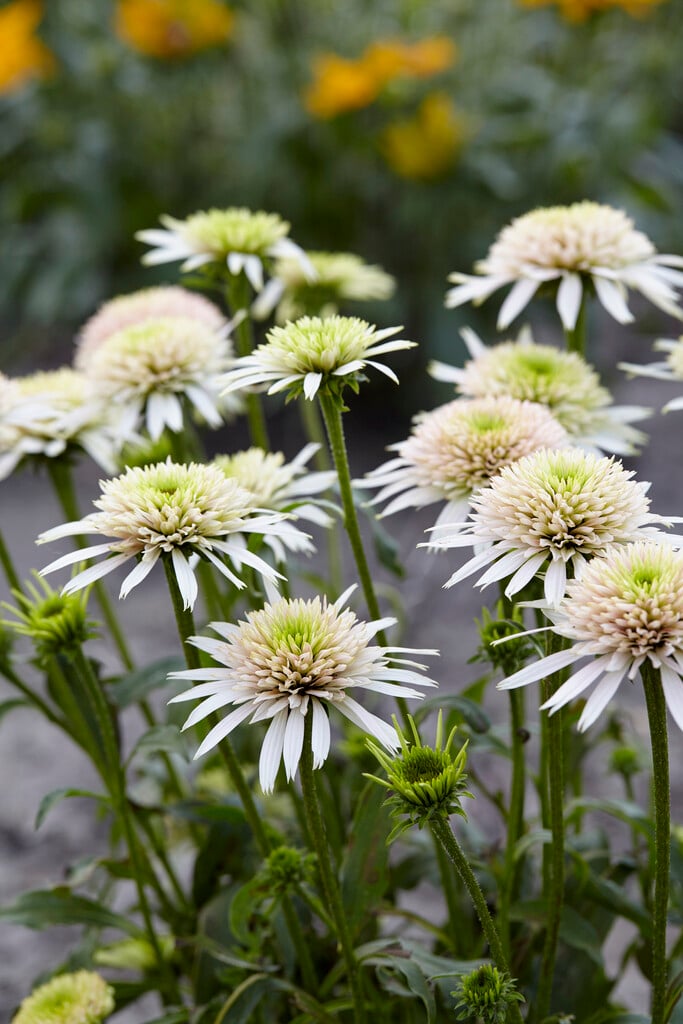Echinacea Cherry Fluff ('Echcher298'PBR) (Cone-fections Series) (d)
coneflower [Cherry Fluff]
A highly attractive, compact, upright, perennial coneflower producing creamy-white, double flowers with a cherry blush from mid-summer into autumn. The flowers open lime green before forming a central, soft pink pompom surrounded by narrow, drooping, cream-white ray petals that are toothed at the ends. Excellent for cutting and attracting pollinators
Size
Ultimate height
0.5–1 metresTime to ultimate height
2–5 yearsUltimate spread
0.1–0.5 metresGrowing conditions
Moisture
Well–drainedpH
Acid, Alkaline, NeutralColour & scent
| Stem | Flower | Foliage | Fruit | |
| Spring | Green | |||
|---|---|---|---|---|
| Summer | Green Pink White | Green | ||
| Autumn | Green Pink White | Green | ||
| Winter |
Position
- Full sun
Aspect
East–facing or South–facing or West–facing
Exposure
Exposed or Sheltered Hardiness
H5Botanical details
- Family
- Asteraceae
- Native to GB / Ireland
- No
- Foliage
- Deciduous
- Habit
- Clump forming
- Genus
Echinacea are erect, clump-forming rhizomatous perennials with simple or pinnately lobed leaves and solitary, long-stalked daisies with prominent conical central disks and often drooping ray florets; attractive to butterflies
- Name status
Trade
How to grow
Cultivation
Grow in fertile, humus rich, well drained soil in full sun. Take care when propagating by divison or root cuttings as they resent a lot of disturbance
Propagation
Propagate by division in Spring or Autumn or by root cuttings from late Autumn to early Winter
Suggested planting locations and garden types
- Cottage and informal garden
- Patio and container plants
- Prairie planting
- Wildflower meadow
- Wildlife gardens
- Cut flowers
- Flower borders and beds
Pruning
Deadhead to extend flowering
Pests
Generally pest-free
Diseases
Generally disease-free
Get involved
The RHS is the UK’s gardening charity, helping people and plants to grow - nurturing a healthier, happier world, one person and one plant at a time.
